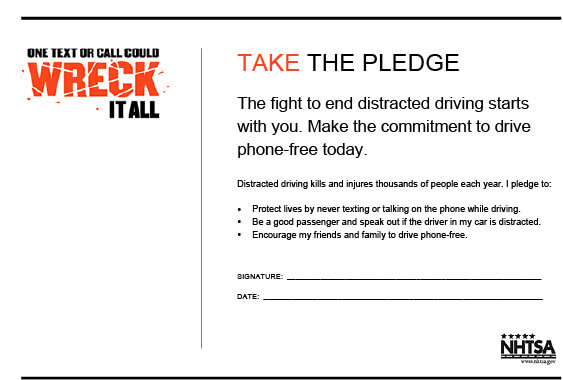Distracted Driving & More
Distracted driving involves any activity that takes the driver’s attention away from the primary task of driving. Distracted driving, impairment, speeding, and not wearing seat belts are all risky choices that can lead to serious injury and death. Teens, who are still learning the complex skills of driving, are particularly susceptible to distractions while behind the wheel. Don’t let you or your teen become another statistic. Here are the facts:
- Motor vehicle crashes are a leading cause of death for U.S. teens. Mile for mile, teens ages 16–19 are involved in 3 times as many fatal crashes as all other drivers. In a 2019 study, 39% of teen drivers admitted to texting while driving at least once in the previous 30 days. According to a AAA study, distracted driving was the cause of 58 percent of teen crashes.
- According to NHTSA, 3,522 people were killed in 2021 in distraction-related crashes nationwide, with teens having the highest rate of distracted driving crashes involving a fatality.
- A Virginia Tech Transportation Institute study revealed that physically dialing a phone while driving increases the risk of a crash as much as 6 times. Texting is riskier still, increasing collision risk by 23 times.
- A recent AAA study shows that when a teen driver is carrying teen passengers, the fatality rate for occupants of other cars increases by 56 percent; for pedestrians and cyclists it increases 17 percent; and for the teen driver, the fatality rate increases 45 percent.
There are three kinds of distractions:
- Visual – doing something that requires the driver to look away from the driving task.
- Manual – doing something that requires the driver to take one or both hands off the wheel.
- Cognitive – doing something that causes the driver’s mind to wander or focus elsewhere.
To combat this growing epidemic, we suggest the following:
- Set a good example: Kids observe and learn from their parents. Put your phone away while driving and only use it when you are safely pulled over. According to the Pew Research Center, 40 percent of teens aged 12 to 17 say they have been in a car when the driver used a cell phone in a way that put themselves and others in danger. To view a video showing the importance of this, please go to
https://www.youtube.com/watch?v=rl7iX1s5D9M - Talk to your teen: Discuss the risks and responsibilities of driving and the danger of dividing their attention between a text, or a phone call, and the road. Show them the statistics related to distracted driving and urge them to share what they learn with their friends. Encourage them to speak up if they are a passenger in a car with a distracted driver.
- Establish ground rules: Set up family rules about not using the phone or other electronic device while behind the wheel. Enforce the limits set by the graduated licensing program and state law.
- Sign a pledge: Have your teen take action by agreeing to a family contract about wearing safety belts, not speeding, not driving after drinking or using any drugs, and not using a cell phone behind the wheel. Agree on penalties for violating the pledge, including paying for tickets or loss of driving privileges.
Other dangerous distractions: In addition to cell phone use, distracted driving can include eating, grooming, drinking, listening to or adjusting the radio, or iPod, using the GPS, talking to passengers, or watching a video, just to name a few activities. Inexperienced drivers are particularly susceptible to these kinds of distractions.
